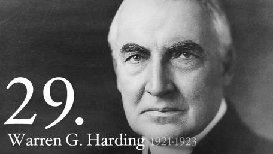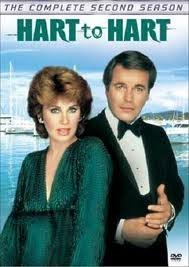Good 49º raining morning.
Yesterday we got the clouds moving in and we topped at 71º.......
Picture of the Day...strange rock formation!
Interesting about speed limits..........
In the United States, speed limits are set by each state or territory. States have also allowed counties and municipalities to enact typically lower limits. Highway speed limits can range from an urban low of 25 mph (40 km/h) to a rural high of 85 mph. Speed limits are typically posted in increments of five miles per hour. Some states have lower limits for trucks, some also have night and/or minimum speed limits.
The highest speed limits are generally 70 mph on the West Coast and the inland eastern states, 75–80 mph in inland western states, along with Arkansas, Louisiana, Maine, and Michigan; and 65–70 mph on the Eastern Seaboard. Alaska, Connecticut, Delaware, Massachusetts, New Jersey, New York, Puerto Rico, Rhode Island, and Vermont have a maximum limit of 65 mph, and Hawaii has a maximum limit of 60 mph. The District of Columbia and the U.S. Virgin Islands have a maximum speed limit of 55 mph. Guam and the Northern Mariana Islands have speed limits of 45 mph. American Samoa has a maximum speed limit of 30 mph. Two territories in the U.S. Minor Outlying Islands have their own speed limits: 40 mph in Wake Island, and 15 mph in Midway Atoll. Unusual for any state east of the Mississippi River, much of Interstate 95 (I-95) in Maine north of Bangor allows up to 75 mph , and the same is true for up to 600 mi of freeways in Michigan. Portions of the Idaho, Montana, Nevada, Oklahoma, South Dakota, Texas, Utah, and Wyoming road networks have 80 mph posted limits. The highest posted speed limit in the country is 85 mph and can be found only on Texas State Highway 130, a toll road that bypasses the Austin metropolitan area for long-distance traffic.
During World War II, the U.S. Office of Defense Transportation established a national 35 mph "Victory Speed Limit" (also known as "War Speed") to conserve gasoline and rubber for the American war effort, from May 1942 to August 1945, when the war ended. For 13 years (January 1974–April 1987), federal law withheld Federal highway trust funds to states that had speed limits above 55 mph. From April 1987 to December 8, 1995, an amended federal law allowed speed limits up to 65 mph on rural Interstate and rural roads built to Interstate highway standards.
History
One of the first speed limits in what would become the United States (at the time, still a British colony) was set in Boston in 1701 by the board of selectmen (similar to a city council):
Ordered, That no person whatsoever Shall at any time hereafter ride or drive a gallop or other extream pace within any of the Streets, lanes, or alleys in this Town on penalty of forfeiting three Shillings for every such offence, and it may be lawfull for any of the Inhabitants of this Town to make Stop of such horse or Rider untill the name of the offender be known in order to prosecution.
Truck speed limits
Some jurisdictions set lower speed limits that are applicable only to large commercial vehicles like heavy trucks and buses. While they are called "truck speed limits", they generally do not apply to light trucks.
A 1987 study said that crash involvement significantly increases when trucks drive much slower than passenger vehicles, suggesting that the difference in speed between passenger vehicles and slower trucks could cause crashes that otherwise may not happen. In a review of available research, the Transportation Research Board said "[no] conclusive evidence could be found to support or reject the use of differential speed limits for passenger cars and heavy trucks" and "a strong case cannot be made on empirical grounds in support of or in opposition to differential speed limits".
Another study said that two thirds (67%) of truck/passenger car crashes are the fault of the passenger vehicle.
If you want to read a lot more, go here: https://en.wikipedia.org/wiki/Speed_limits_in_the_United_States
From Mr. Food
Need a good holiday go-along for your Thanksgiving feast or Christmas dinner? The eye-catching checkerboard pattern of our tasty Patchwork Potato side dish, is sure to be a crowd-pleaser. Your company will enjoy a choice of their favorite potatoes: dill mashed potatoes or mashed sweet potatoes.
- 4 cups warm mashed potatoes
- 4 tablespoons (1/2 stick) butter, melted, divided
- 1 teaspoon chopped fresh dill
- 1/4 teaspoon black pepper
- 2 (29-ounce) cans yams or sweet potatoes, drained
- Grated peel of 1 lemon
- Preheat oven to 350º. Coat an 8-inch square baking dish with cooking spray.
- In a medium bowl, combine mashed potatoes, 2 tablespoons melted butter, the dill, and pepper; mix well and set aside.
- In another medium bowl, mash yams then add lemon peel and remaining 2 tablespoons melted butter; mix well.
- Spoon five equal-sized scoops yam mixture into prepared baking dish, placing one scoop in each corner and one scoop in center. Using a spoon, shape each scoop into a square.Place mashed potato mixture in the four empty squares, dividing mixture equally. Pat down evenly to fill any gaps, forming a checkerboard pattern.
- Bake 45 to 50 minutes, or until heated through.
Historically this date...........
And births this date include...
All I know. Nuff said. Have a good Thursday. Ciao.
xo Sue Mom Bobo
National Deviled Egg Day features a favorite hors-d’oeuvre or side dish for parties, holidays, family reunions and potluck dinners. Deviled eggs are the star of the show each year on November 2.
This well-loved food wows guests at the holidays. Designers have even created specially designed carrying dishes and plates. The deli section of the grocery store prepares packaged deviled eggs, and they can be found in some convenience stores, too.
Other names for this devilish dish include eggs mimosa, stuffed egg, salad eggs or dressed egg. To make them, hard-boiled eggs are shelled, cut in half and filled with the hard-boiled egg’s yolk. The yolk is mixed with other ingredients such as mayonnaise and mustard.
Eggs are quite versatile when it comes to making simple dishes elegant. The deviled egg is another example of taking the humble egg and transforming it with one or two simple ingredients. The final result is centerpiece-worthy. Colorful relishes, spicy peppers, pimentos or savory herbs, elevate deviled eggs. Additionally, the variety offers entirely new flavor profiles demonstrating just how delicious this family favorite can be
Other approaches make them a little more creamy with sour cream. Or, a bit more tart with added vinegar. It’s possible to please just about every palate can be satisfied. From the traditional paprika garnish to crunchy bacon, or a little caviar, anchovy or herring, there is some devilish experimenting any cook can do.
The first known print reference referring to the term “deviled” about food, appeared in 1786. It was in the 19th century that it came to be used when referring to spicy or zesty food, including eggs prepared with mustard, pepper or other ingredients stuffed in the yolk cavity.
HOW TO OBSERVE
Make up your favorite recipe or try something new. Try a fancy recipe. Serve them for guests or just for you.
















